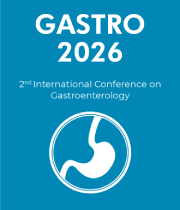Covid-19 GI Symptoms, Diagnosis and Treatment
SARS-CoV-2 is predominantly a respiratory disease that spreads primarily through direct contact (droplets, person to person). However, gastrointestinal (GI) symptoms such as vomiting, nausea, diarrhoea, and abdominal pain are becoming more often recognised as COVID-19 symptoms. Other symptoms of COVID-19, such as dysgeusia and anosmia, have also become more well-known. Studies have also found that these GI symptoms are frequently an early manifestation of Covid-19 and hence a strong predictor of the virus's emergence. There are still many unanswered questions and challenges, such as the relevance of virus detection in asymptomatic subjects' stool/rectal swabs, whether ACE2 is a direct mediator for SARS-CoV-2 entry into the GI tract, and how the virus might survive passage through the digestive system's extreme pH environment. As a result, it's critical to see Covid-19 as more than a respiratory disease and to identify approaches to manage the disease's gastrointestinal component.
- Early Detection of COVID through GI symptoms
- Diagnosing GI symptoms
- Treating the GI symptoms of COVID 19
- Post COVID GI disorders



